This is my life. The length of my days. Day and night I meditate upon it.
BRRRRINGG. BRRRIIINGG. BBBBRRRRIIINNNGG.
Its 4AM and the wake up bell is sounding. Is this a dream? Where am I? What am I doing here?
“Notice the flavor that the mind adds to your experience, right at the moment the alarm sounds or the bell rings —what is your experience? Then what happens?” Jan Chozen Bays Roshi instructs, prompting us to look into the nature of our experience — observing what the Buddha names the feeling tone. The feeling tone, is before thoughts or emotions it is the next ‘nen’ (mind-moment) as we move from direct experience, bell or alarm sound, to some level of reaction. Feeling tone is the valance that we place on experience, either positive, negative or neutral.
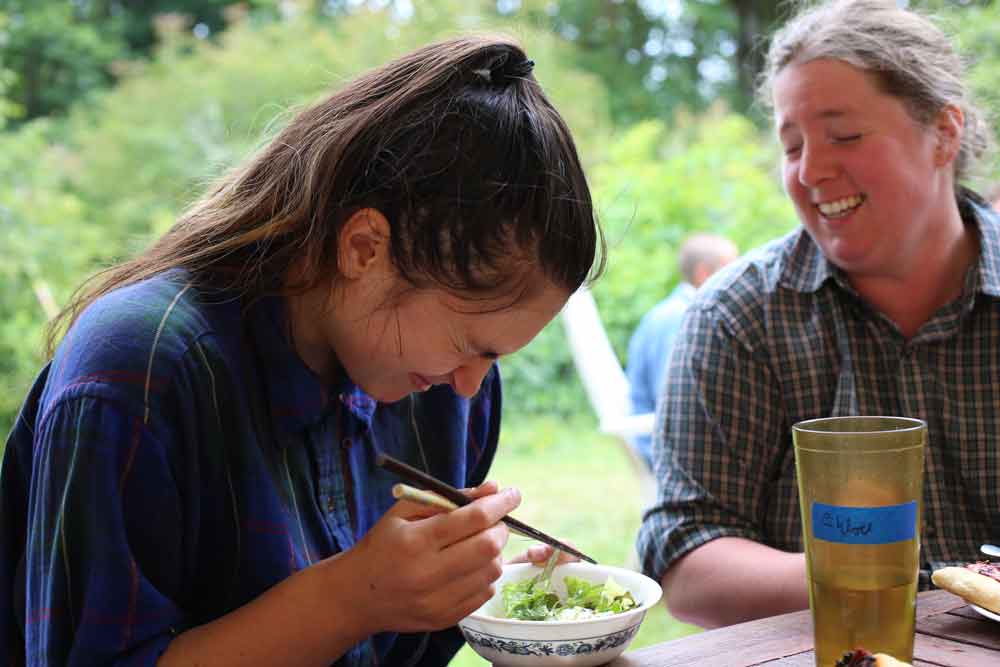
When the bell rings you hurry and put on your robes.— Master Unmon.
What do you cloak yourself in? Pants of negativity, reactivity? Shirts of anxiety? Does busyness and obsessive thinking cover the naked radiance of your awake heart? Or do you wrap yourself in joy, presence, loving kindness? What about the clothes of emptiness?
Is our Buddha Nature something that can be put on and taken off?
In our normal habitual/reactive mind, feeling tone becomes thought, thought becomes emotion. And we find ourselves snowballing into anger, frustration, irritation, in an act of aversion. Or on the opposite side, trying to grasp a hold of ever-changing pleasures — caught in the dream net of our likes and dislikes.
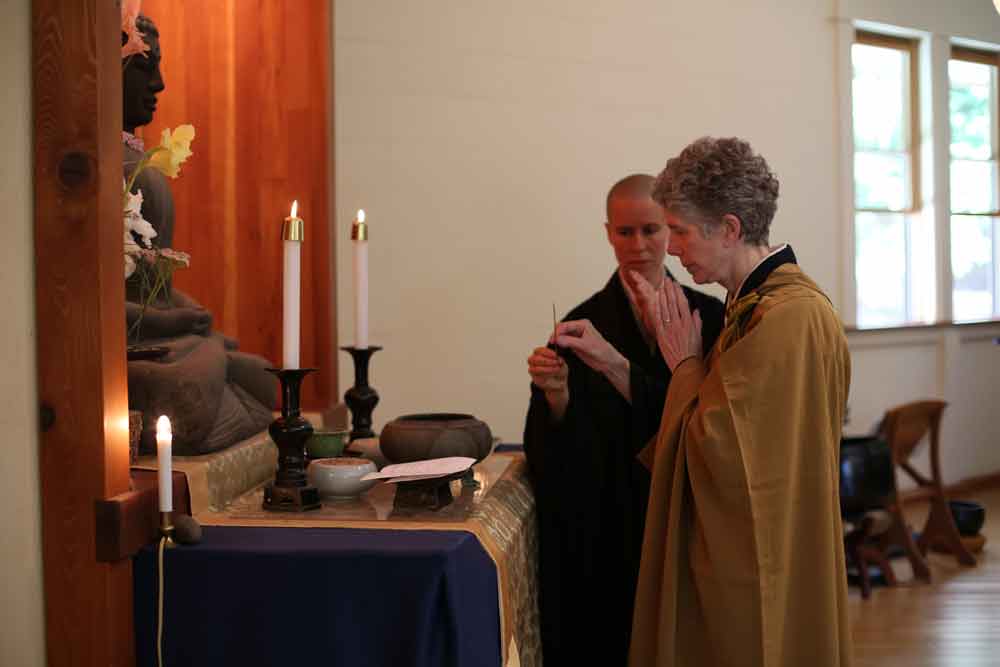
You forget the vast universe, the flaming stars, the empty spaces between them, the infinity of worlds, the eternity of time. — Master Unmon
How do we open to the vast openness of our own hearts? The infinite clarity of our own minds? How do we remember our true nature and not allow ordinary habits to take over?
At Great Vow Zen Monastery, the time and rhythm of our days is marked by bell sounds — wake-up, meditation, morning chants, temple care-taking, breakfast, work, noon chants, lunch, break, afternoon work, evening chants, supper, meditation, night chants, lights out — gentle markers directing the flow of energy from one activity to another.
What happens when you let go of time and follow the flow? Who are you in the midst of the immediacy of your life?
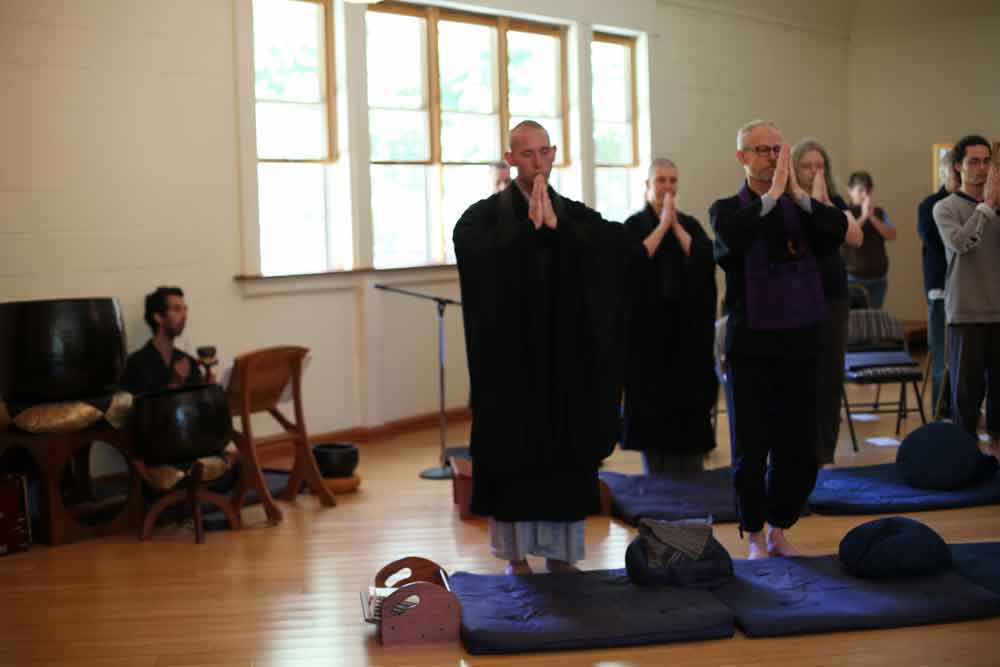
Clang. Bang. RING. PET. DING. diiiinnngg. Wake-up. Here. NOW. Crisp and clear, full bodied vibration-sensation, when each bell sounds they invite us into presence. For a moment automatic thinking subsides and the whole world just rings. Each sound is like this, an opportunity to clear away mind’s residue and allow its clarity and compassion to shine forth.
Far from being a remote mountain hermitage, monastic practice at Great Vow is a practice of whole-hearted responsiveness. “The walls of the monastery are permeable,” Chozen Roshi often says. And they are — built in the early 1970’s as an elementary school, the architect was deeply inspired by Japanese architecture — and so we find ourselves inhabiting a building that is permeable to the forest out back, the geese in the river valley, occasional critters hopping and scarring down the hall and percussive rain sounds accentuate meditation. Thus, we are deeply aware of the changing seasons, the cool wet winters and hot dry summers of the Pacific Northwest.
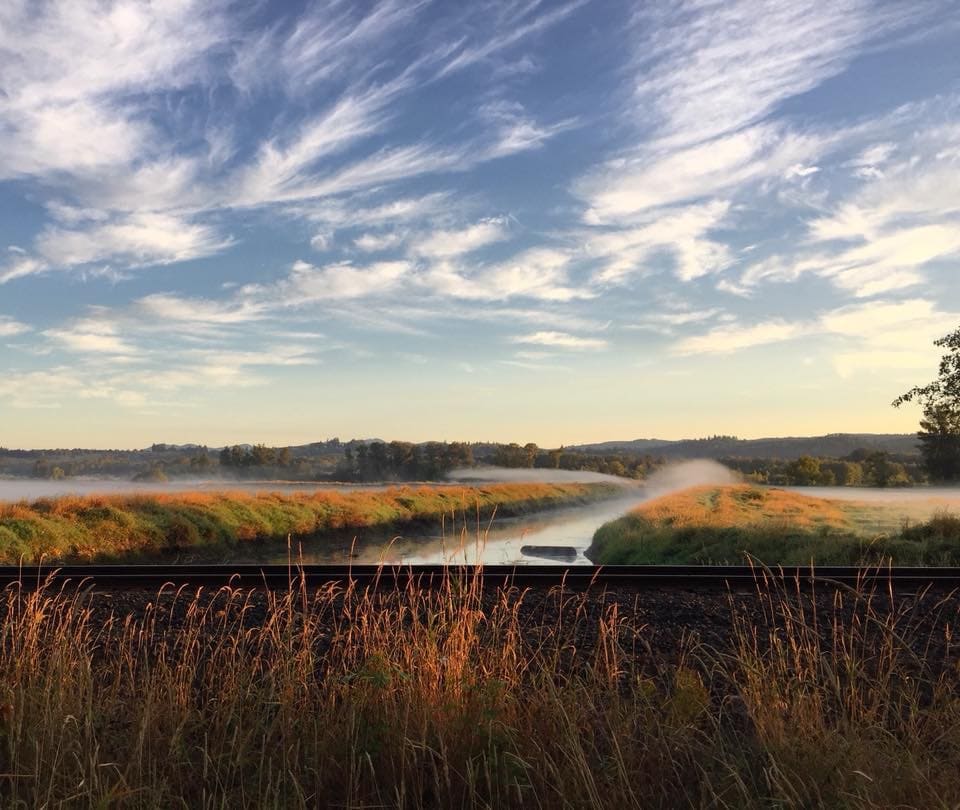
But what Chozen Roshi was also saying is that the monastery is an open system, with doors open to anyone seeking spiritual nourishment. Whether for a couple hours on a Sunday morning, a weekend retreat, a weeklong sesshin (silent meditation retreat), a month-long residential stay, or years of residency and ordination — the monastic container supports the heart’s deepest intentions for Awakening and living a compassionate life.
Residency at Great Vow is our unique offering and is the hub by which the wheel of Dharma turns the monastery. The permeability of the elements lends us to deeply experience the Earth’s natural rhythms — and so residency also has a seasonal rhythm.
“When I look at the fallow garden,” says Haley Myoyu Voekel, head gardener at Great Vow, “I don’t see death as something finite, in a way the garden is much more lively in the Winter because it is teeming with potential, what some may see as empty space, I see as alive!”
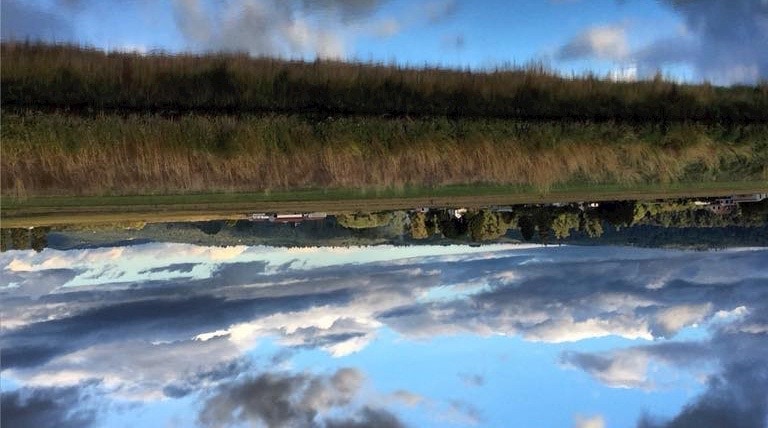
In darkness it is most bright, while hidden all the more manifest. — Hongzhi, Guidepost for Silent Illumination
Like the space at the bottom of the exhale, the winter months at Great Vow are an opening to the darkness. The schedule is more relaxed allowing more time for rest or personal practice. An opportunity to discover, abide in the fundamental ground, pure potentiality.
What is it that is alive, in the darkness and the cold?
From this perspective it makes sense that we commemorate the Buddha’s physical death, Pari-Nirvana in mid-February, the middle of winter.
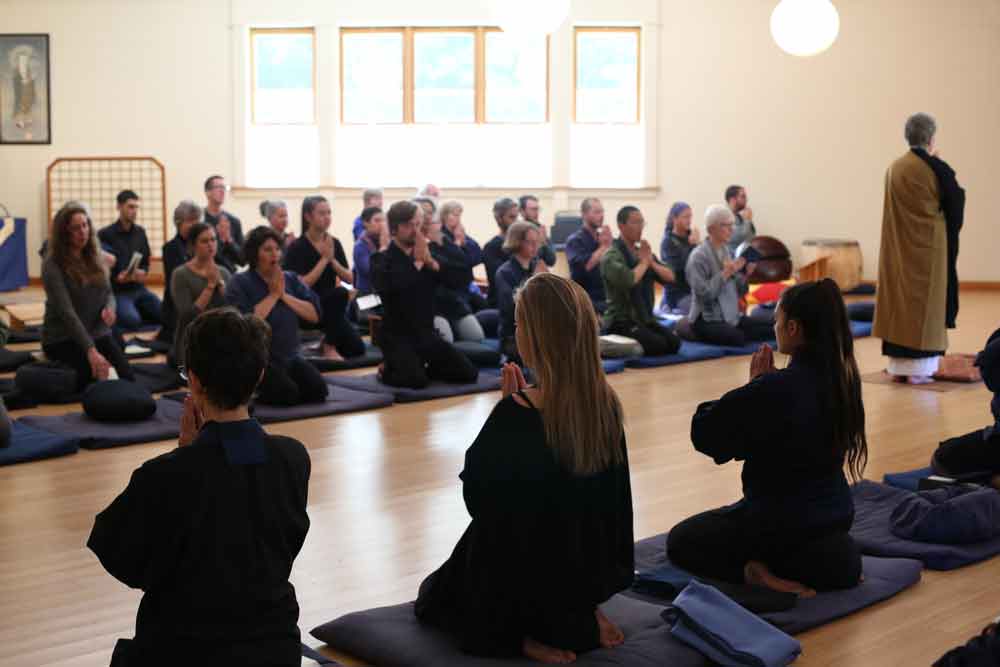
If this greatest cold does not penetrate into our bones, how will the fragrance of the plum blossoms pervade the entire universe? —Dogen Zenji
When spring comes it blossoms everywhere — who isn’t affected? While the whole universe is busy creating, shooting forth new life in every direction we harness the creative force engaging with creative process as a practice of awareness, investigation and compassion. Sometimes creative process is a clearer mirror then zazen, reflecting our projections, expectations and judgements — directly in the moment. What you are creating and your state of mind arise together, they are inseparable from each other.
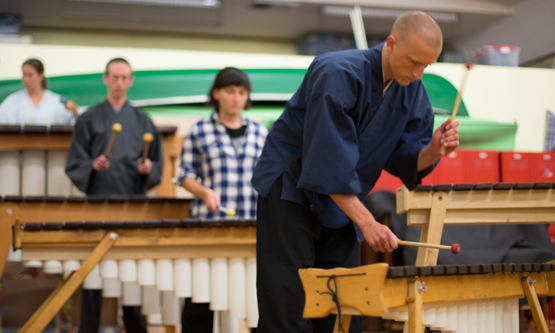
While Great Vow has always had a creative vibrancy to it (we are probably the only monastery with a marimba band) this is the first year that we are structuring the monastic schedule to include Creative Practice for a three-month residential training period. This year the theme for our Creative Practice Period is This Life is a Dream. To view experience as dream-like is a fundamental Dharma teaching that resounds throughout the ages. During this practice period we will contemplate and explore what it means to wake up within a dream. Who is the dreamer and the dreamed? Can compassion be cultivated in this dream like world? Do fixed concepts keep us bound in a nightmarish experience?

May this be an encouragement to take off the clothing of concepts and allow the immediacy and spontaneity of the natural mind to shine through. To dance in not-knowing. To meet ourselves and each other, fresh, curious and open — as we explore the depths of being and the myriad expressions of our awakened heart. It is our intention to develop flexibility of mind, to reveal our fixed beliefs and see through the habits of mind that cause suffering to ourselves and the world. To remember the vastness of worlds and eternity of time in each and every breath—the seasons of residency is our skillful means for doing just this.
Great Vow is always open. We would love to have you join us. Come for our Sunday Public Program, for a retreat, a sesshin, or join us in one of our seasons of residential practice. The Summer and Fall seasons mirror the open, curious, uninhibited playfulness of the noon-day sun and the quiet, peaceful, stillness and surrender of Autumn. Check out our Summer Program and Autumn Ango for more information.
